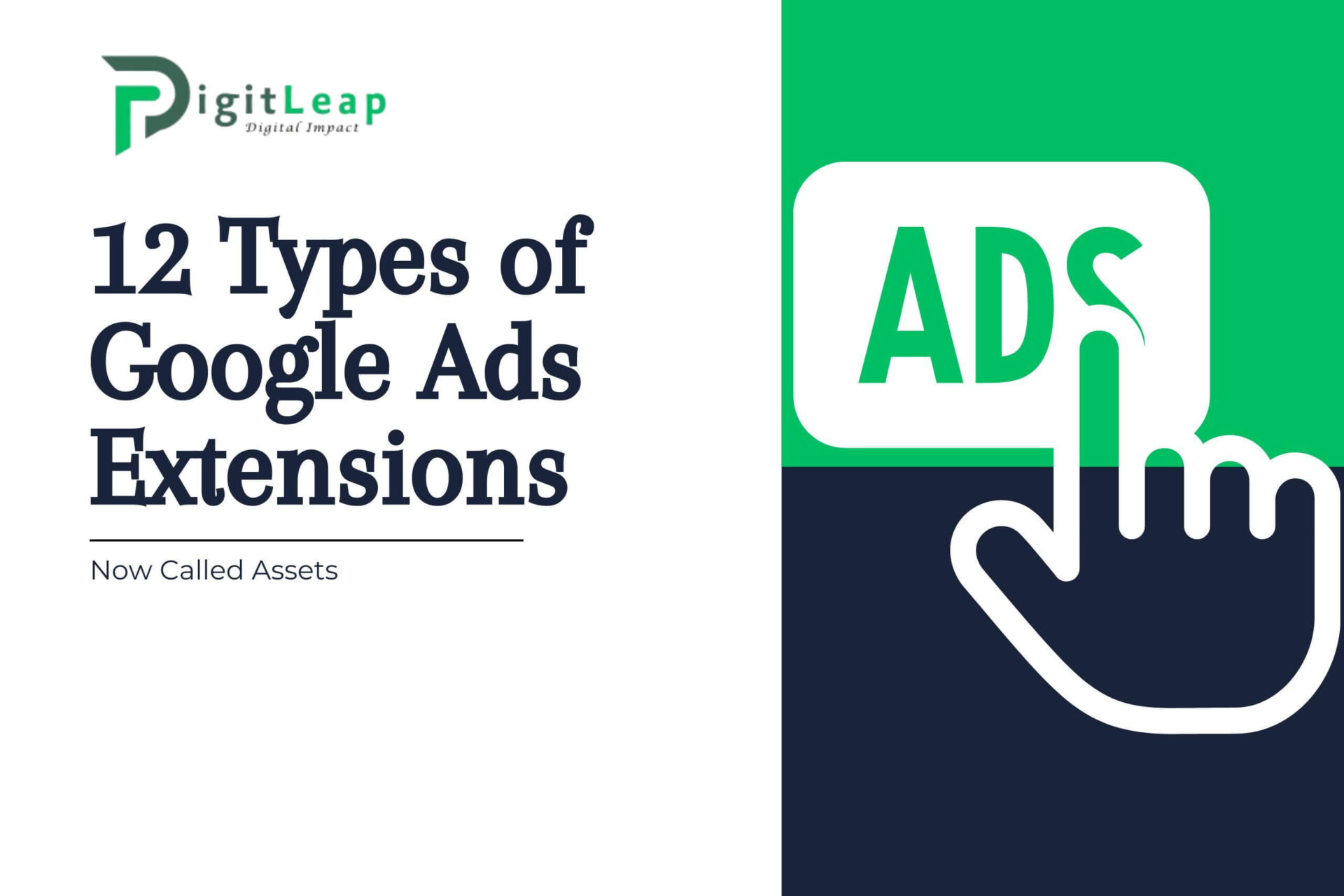12 Types of Google Ads Extensions, Now Called Assets
Google Ads extensions, now referred to as “assets,” are one of the most powerful tools advertisers can use to enhance their campaigns. These assets allow businesses to add more information to their ads, making them more useful to potential customers. Whether you’re running ads for a small business or a large corporation, using the right Google Ads assets can increase your click-through rates, drive more conversions, and make your ads stand out in a competitive digital space.
In this article, we’ll break down the 12 types of Google Ads extensions (assets) that you should consider using to maximize the impact of your campaigns.
1. Sitelink Assets
Sitelink assets allow you to add additional links below your main ad. These links can direct users to specific pages on your website, such as product categories, special offers, or contact pages. This helps in guiding users to the most relevant pages, improving their experience and boosting your chances of conversions. For example, if you run an eCommerce store, you can use sitelinks to take customers directly to popular product categories.
2. Callout Assets
Callout assets are short snippets of text that appear alongside your ad copy. These can highlight key features, benefits, or offers about your business, such as “Free Shipping,” “24/7 Customer Support,” or “Exclusive Discounts.” By using callout assets, you can quickly showcase what makes your product or service unique, enticing users to click.
3. Structured Snippet Assets
Structured snippet assets provide a way to highlight specific aspects of your product or service in a more organized manner. They are essentially headers followed by a list of related items. For example, if you own a hotel, you can use structured snippets to list out amenities like “Free Wi-Fi,” “Pool Access,” and “Spa Services.” This helps potential customers quickly see what you offer.
4. Call Assets
If you want customers to call your business directly, call assets are a must. This asset allows you to add your phone number to your ads, making it easy for users to call you with a single click. This is particularly useful for businesses that rely on phone inquiries, such as local services or reservations.
5. Location Assets
Location assets allow you to showcase your business’s physical location in your ads. By linking your Google My Business account to your Google Ads, you can display your address, phone number, and a map to your location. This is ideal for businesses that want to attract local customers, such as restaurants, retail stores, or service providers.
6. Affiliate Location Assets
If your products are sold through various retail chains, affiliate location assets can help. This asset shows users where they can find your products in physical stores near them. For example, if you sell electronics through big retailers like Best Buy or Walmart, affiliate location assets will direct users to the nearest location that carries your products.
7. Price Assets
Price assets allow you to display pricing information directly in your ad. You can showcase different products or services along with their prices, which helps users see at a glance what you offer and at what cost. This is particularly effective for eCommerce stores or businesses with clear, competitive pricing.
8. App Assets
For businesses with a mobile app, app assets are essential. This asset allows you to add a direct link to your app in the ad, encouraging users to download it. This is especially useful for businesses that rely on app downloads for engagement, such as mobile games or delivery services.
9. Image Assets
Image assets are one of the newer additions to Google Ads. This asset allows you to add high-quality images to your search ads, making them more visually appealing. While traditional text ads are effective, adding an image can capture attention more quickly, leading to higher engagement and click-through rates.
10. Lead Form Assets
Lead form assets make it easier for users to provide their information without leaving the search engine results page. With this asset, users can fill out a form directly in your ad, whether they’re signing up for a newsletter, requesting more information, or downloading a brochure. This simplifies the lead generation process and increases the chances of capturing valuable customer information.
11. Promotion Assets
Promotion assets are perfect for highlighting sales, discounts, or special offers. By adding a promotion to your ad, you can quickly attract users looking for a deal. You can include the discount amount, the code, and even the date the offer expires. This is a great way to boost traffic during seasonal sales or special promotions.
12. Review Assets
Reviews are a powerful tool for building trust with potential customers. Review assets allow you to display third-party reviews or ratings alongside your ad, showcasing your credibility and reputation. Positive reviews can influence users’ decisions and give them more confidence in choosing your product or service.
Conclusion
Using the right combination of Google Ads assets is essential for making your ads more informative, engaging, and effective. Each type of asset provides unique benefits, from helping customers find your location to offering easy contact options or showcasing your prices and promotions. At DigitLeap, we understand how crucial it is to leverage these tools to optimize your advertising efforts and achieve better results. By implementing the right assets in your Google Ads campaigns, you can boost your visibility, drive more clicks, and ultimately grow your business.






